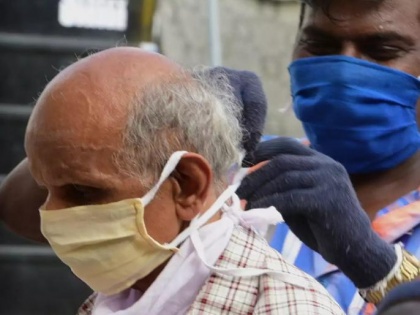How to identify COVID-19 in older adults? Check out what new study has revealed
By Lokmat English Desk | Published: May 8, 2021 03:21 PM2021-05-08T15:21:38+5:302021-05-08T15:22:21+5:30
India is currently dealing with a devastating second Covid-19 wave that has swept through the nation, crushing the country's ...

How to identify COVID-19 in older adults? Check out what new study has revealed
India is currently dealing with a devastating second Covid-19 wave that has swept through the nation, crushing the country's health infrastructure and overburdening frontline medical workers. The number of coronavirus cases in the country is increasing day by day.
Fever in the second wave of coronavirus is a very strong indicator that a person is corona positive. This has proven to be true to a large extent in the youth, but fever in the case of the elderly is not always strong indicator that a person is corona positive.
According to a recent research, Older adults may not have these typical symptoms like fever when they have corona.
So how to identify Covid-19 infection initially in the elderly?
The answer is to continuously monitor their oxygen level using pulse oximeter.
Monitoring only fever as the main symptom may not only threaten their life but may also infect other family members.
According to new research on the corona at Washington State University in the US, the use of pulse oximeter is more effective in the case of older people than checking the body temperature. The latest research is published in the medical journal Frontiers in Medicine. It is done by Catherine Van Son and Deborah Iti of Washington State University's College of Nursing.
Check out for other symptoms:
According to the researchers, 30 percent of the severely corona-infected elderly did not have fever at all or developed a mild fever. However, they show other symptoms of corona such as fatigue, body pain, smelling and loss of taste.
Keep an eye on the oxygen level:
That is why scientists have advised to identify adequate oxygen deficiency (hypoxia) in the case of the elderly with a pulse oximeter. Subsequent RT-PCR investigations may confirm corona.
Take care while applying oximeter:
-Keep hands warm and comfortable while applying oximeter on finger
-If you want to apply oximeter on your finger, remove nail polish etc.
-Note the oxygen level over time and understand the changes
-Allow the oximeter to stay for some time until the reading is stable
These things also affect the reading:
-Weak blood circulation
-Skin thickness
-Use of tobacco etc.
-Having ink or nail polish on the fingers
-Skin Temperature